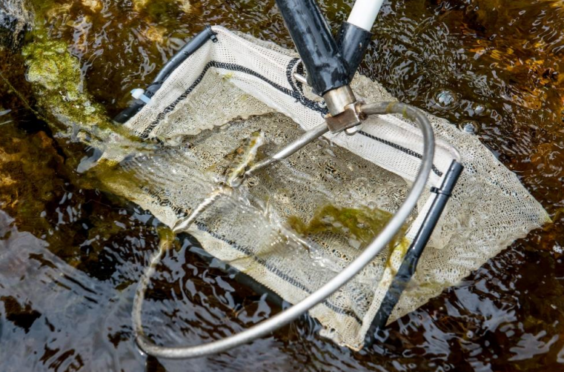Young salmon stocks in the upper River Dee are at their highest since Storm Frank wreaked havoc across the north-east four years ago.
The River Dee Trust’s 2018 survey of juvenile fish in the higher reaches of the river and its tributary waterways west of Ballater has shown a “marked increase” on the previous year.
In 2016, after the floodwaters of Storm Frank destroyed riverbanks and caused millions of pounds of damage up and down Deeside, the trust recorded an average of just three salmon fry per 1,075 square foot in the upper reaches of the Dee.
But last year, the average juvenile salmon catch in the same recording areas was almost 30 per 1,075sq ft – almost 10 times more fish.
Researchers from the trust used the method of electrofishing, a study method which causes no permanent harm to fish, to test the waters in the areas including the River Gairn north of Braemar, the Geldie Burn to the west of the Linn of Dee, and the Clunie Water and Callater Burn south of Braemar.
Earlier this month, the salmon season was officially opened on the River Dee by rugby heavyweight Rob Wainwright, who made the first cast and traditionally toasted the river.
Pamela Esson, a field officer for the River Dee Trust, welcomed the results but warned that the high number of young salmon recorded could have been a result of the major droughts during last summer.
She said: “It is encouraging to see the far reaches of the catchment being populated and I am pleased we have seen the best results in the last four years.
“We saw a marked increase in 2017 and a further boost in numbers during 2018.
“There is a health warning with this new data, however, as the warm weather combined with the lack of rainfall over the spring and summer months resulted in very low water levels.
“It is possible that fish may have been pushing into neighbouring territories as the river became shallower and narrower, resulting in them living close together and us catching more in the electrofishing surveys.”
Concerns were raised last week regarding research which suggested as much as 48% of juvenile salmon, known as smolts, died on their way to the North Sea.
